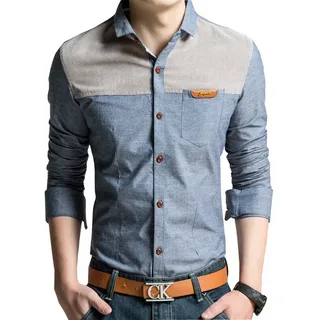Making a shirt might appear simple; however, every small part can impact people and the planet in major ways. The thread holds pieces of cloth together, and this cloth hugs the skin. If that thread has bad chemicals inside, the hug is not so nice. The Cradle to Cradle Certified™ (C2C) Material‑Health label tells brands which threads stay safe from start to finish. Big thread makers like Coats already earned shiny badges—gold, even platinum—for many eco lines.
1. What the label is
C2C Material‑Health checks every dye, finish, and fiber in a product. A lab team scores them—bronze, silver, gold, or platinum—based on how kind they are to people and the earth. Gold means no scary stuff at all; bronze still has some, but under a tight limit; platinum is best, nearly perfect loop. The label also asks, “Can this item cycle again?” If yes, points go higher.
2. Why threads need it
Many brands swap fabric to organic cotton or recycled PET, yet still sew with old polyester thread full of unknown bits. That small string can break a circular dream. A C2C‑okayed thread speaks the same safe language as the fabric, so a recycler can shred, melt, or compost a whole garment without a sorting headache. Coats’ “Cellulose Kit” threads, for example, hold a Gold ticket in version 4.0, ready for true loop life.
3. How scoring works in kid talk
- List stuff. The factory writes every chemical down to 0.01 %.
- Check danger. Scientists mark red (bad), yellow (maybe), and green (good).
- Plan better. If red shows, the maker swaps it or builds a phase‑out plan.
- Earn level. When the list turns mostly green, the product moves up the ladder.
Each year, numbers get double‑checked, so cheating is hard. Independent eyes—auditors like EY—peek at papers before the medal stays.
4. Brand wins in plain words
- Trust boost. Shoppers see the C2C stamp and feel calm.
- Less recall risk. Safe thread means no sudden toxin news.
- Simple storytelling. Hangtag can say, “Gold level—zero nasty dyes.”
- Regulation ready. EU talks about strict chemical bans; C2C gear is already one step ahead.
5. What changes in the factory
Sentence long: Instead of dipping a cone in mystery finish, the team now uses a closed‑loop bath that recycles 98 % of solvent, a shift that keeps smell low and cuts cost on drums. Short one: workers breathe easier. Machines may run at lower heat because the new dye reacts faster, saving energy.
6. Cost chat—a little higher, big return
Gold‑level thread may cost 8 % more per kilo than a regular spool. But mix in less waste, fewer audits, and premium shelf price, the math flips. One outdoor brand cut compliance testing bill by 30 % after switching to C2C threads, because many chemical checks are already covered under the label. Small cone, big wallet smile.
7. Matching label to product line
- Kids wear → aim for Gold or Platinum, parents care most.
- Work wear → Silver okay if high abrasion is still needed.
- Luxury basics → Platinum said “pure,” fits brand story.
Remember: level must show on final spec sheet, else marketing cannot print claim.
8. Watch outs for sourcing teams
- Level drift. A dye supplier may tweak the formula next quarter; keep a copy of the latest certificate date.
- MOQ gaps. Special eco dyes sometimes require 50 kg lot. Plan early.
- Lead time. C2C audit renews every two years; schedule sample orders away from audit month to dodge delay.
9. FAQ lightning round
Q: Can I mix C2C thread with non‑cert fabric?
A: Yes, but you lose the full garment claim. Better keep the whole bill of materials aligned.
Q: Does Gold mean compostable?
A: Not always. Gold speaks about health safety; check if the fiber is natural or recycled poly to know the loop path.
Q: Is C2C the same as GRS or OEKO‑TEX?
A: Those test different things. GRS tracks recycled content, OEKO tests harmful substances. C2C looks wider: chemistry, circularity, climate, water, and social.
10. Future peek
More thread firms join the race. A&E just scored Gold for the new range in 2023. Coats plans even higher levels for performance lines by 2026. Regulations push PFAS bans, so C2C spec will likely tighten again. Getting a label now means a smoother ride later.
11. First steps checklist for your brand
- Map current threads. Note fiber, finish, supplier.
- Ask cert list. Email vendor: “Do you offer C2C Material‑Health certified cones?”
- Order a lab‑dip sample. Test seam on pilot run.
- Update tech pack. Add “C2C Gold thread only” line.
- Train QC. Show staff how to spot a correct cone label at the warehouse gate.
Simple five steps, big leap.
End stitch
C2C Material‑Health labels turn hidden seams into loud green stories. Choosing certified thread (like textured thread or trilobal polyester thread) may feel tiny, but it flips the garment from half‑safe to full‑safe, from kinda circular to true loop‑ready. Brands that clip this badge early will wave ahead when new laws land. So next time you thread a needle, think of a tree, a river, a worker, a child. Safe string ties them all. And that is what new labels mean.

